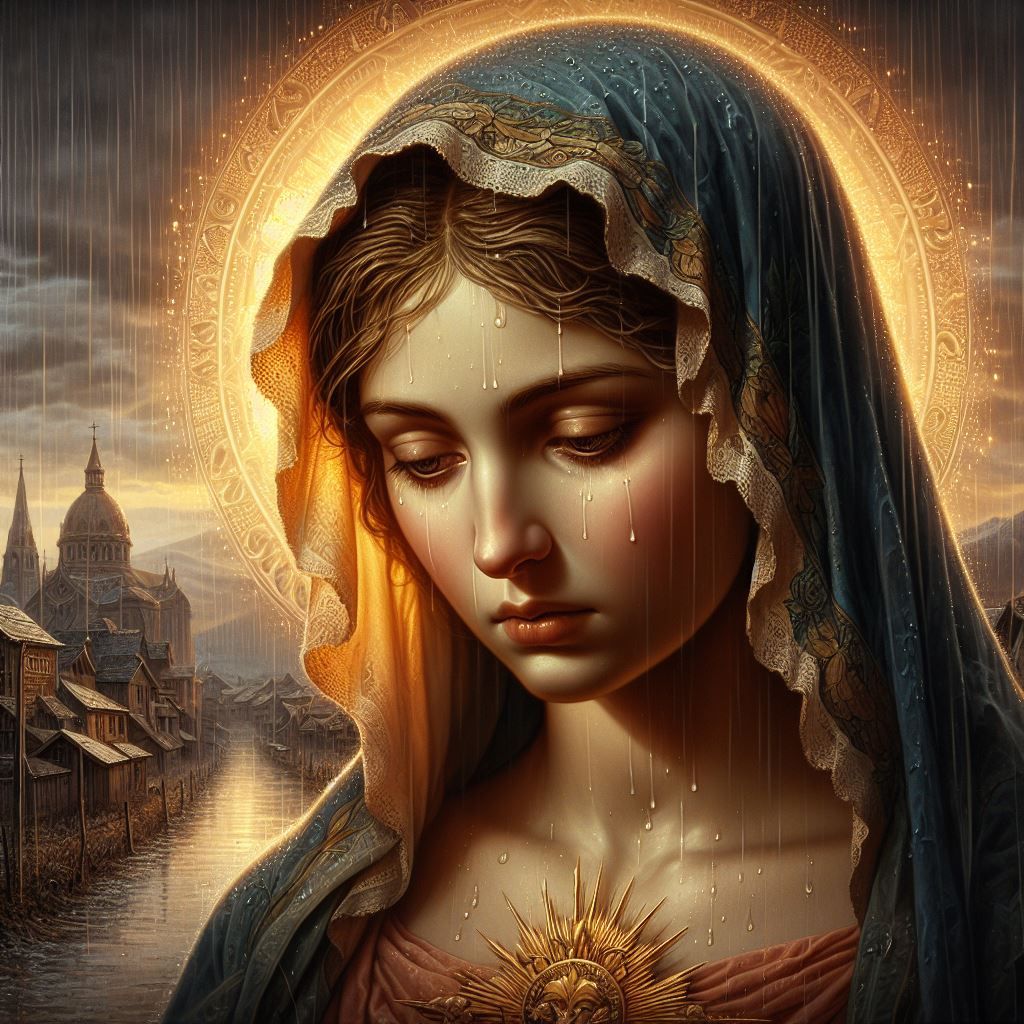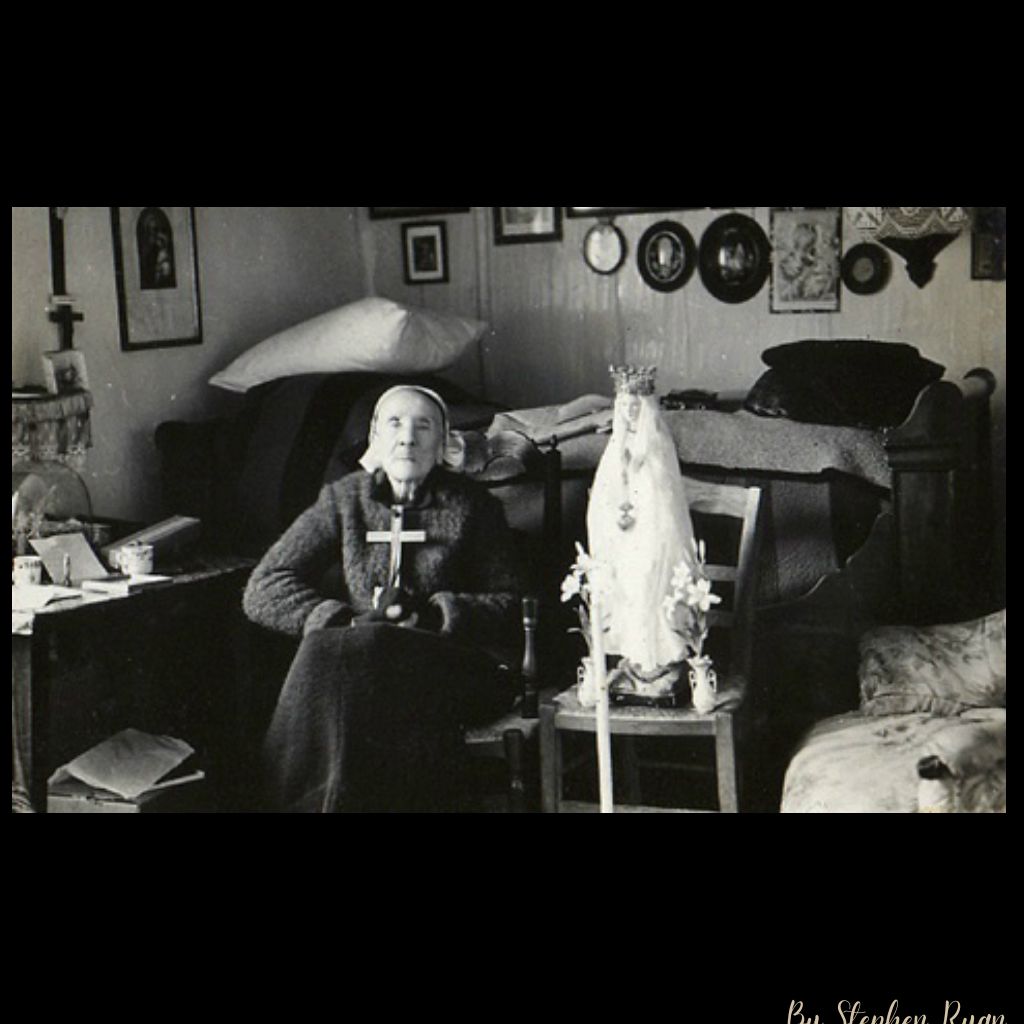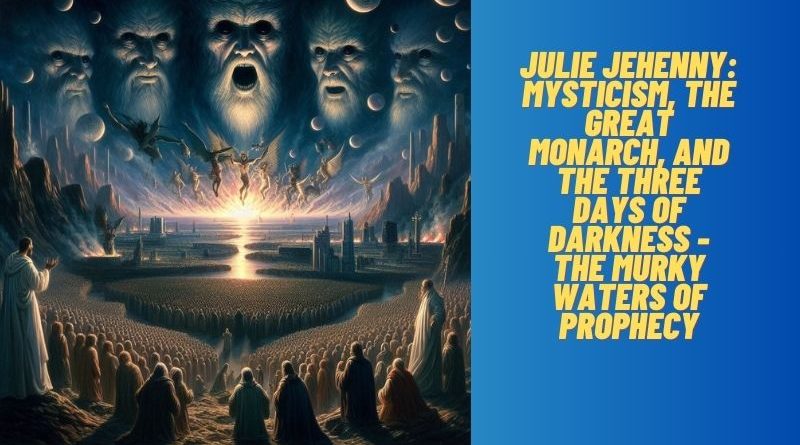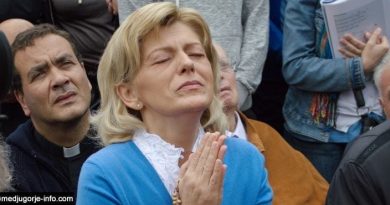Julie Jehenny: Mysticism, the Great Monarch, and the Three Days of Darkness – the Murky Waters of Prophecy
Amidst the turbulent French Revolution, amidst the clash of steel and the cries of a nation tearing itself apart, emerged a figure of enigmatic piety and controversial visions – Julie Jehenny. Known as the “Stigmatized of La Fraudais,” she claimed to receive messages from God and the Virgin Mary, specifically concerning the restoration of the French monarchy. Whether a divine mouthpiece or a pawn in political machinations, her story remains a fascinating and complex one, demanding careful consideration from a Catholic perspective.

Julie’s life was marked by extraordinary hardship. Orphaned at a young age, she endured financial woes and bouts of ill health. However, it was in 1885 that her experiences took a truly remarkable turn. On April 6th, she reportedly began bleeding from her hands, feet, and side, mirroring the wounds of Christ. This stigmata, later investigated by medical professionals, remained a source of awe and skepticism for decades.
The messages Julie received further fueled the flames of intrigue. Visions of the Virgin Mary and pronouncements regarding the divine mandate of the Bourbon dynasty fueled a small but fervent royalist movement. She proclaimed that a chosen descendant of King Louis XVI would reclaim the throne, ushered in by a period of tribulation and divine intervention.
From a purely Catholic viewpoint, Julie’s claims present a delicate theological knot. The Church recognizes private revelations, like visions and prophecy, but distinguishes them from public revelation found in Scripture and Tradition. While the Church has not formally condemned Julie’s visions, their acceptance requires critical discernment.
Several aspects raise legitimate concerns. The pronouncements favoring a specific political entity, the Bourbon dynasty, are not inherently divine decrees. Jesus himself preached against earthly kingdoms, emphasizing His spiritual reign. Furthermore, the potential for manipulation and political exploitation looms large in such situations. The French crown’s desperate grasp for legitimacy could have easily influenced or misinterpreted Julie’s messages.
However, dismissing Julie solely as a political pawn would be an oversimplification. Her genuine piety and suffering cannot be easily dismissed. The documented occurrences of the stigmata, while not solely indicative of divine favor, point to a profound spiritual experience. Moreover, many of her messages echoed broader Catholic themes of repentance, conversion, and divine judgment.
THE THREE DAYS OF DARKNESS

Alongside visions of the Virgin Mary and pronouncements about the French monarchy, her prophecies of a future period of intense darkness – the “Three Days of Darkness” – continue to spark curiosity and concern, particularly from a Catholic perspective.
Understanding the Prophecy:
Jehenny claimed to receive warnings from the Virgin Mary regarding impending societal and natural catastrophes, culminating in three days of complete darkness, during which demons would roam free and harm those outside their homes. This period would be one of purification and conversion, followed by a renewed era of peace.
Beeswax Candles as Symbols: Jehenny did speak of blessed beeswax candles offering protection and light during the Three Days. However, it’s important to remember that symbols hold different meanings for different people. For some, it’s a literal belief in their protective power, while others might interpret it as a reminder to cultivate personal faith and trust in God.
Theological Considerations:
While the Church acknowledges private revelations like prophecies, they are distinct from public revelation found in Scripture and Tradition. Critical scrutiny is essential to discern potentially genuine messages from sensationalism or misinterpretations.
Points of Concern:
- Fear and Manipulation: The prophecy, particularly its apocalyptic imagery, can potentially induce fear and anxiety. Manipulative individuals might exploit such a narrative for their own agendas.
- Distraction from the Gospel: Overemphasis on private revelations can distract from the core message of the Gospel, focusing on earthly events instead of personal conversion and Christ’s teachings.
- Questionable Certainty: Jehenny’s pronouncements often lacked specific dates or details, rendering their verification and interpretation difficult. Additionally, associating specific events with divine pronouncements is always dangerous.
A Catholic Approach:
- Focus on Scripture and Tradition: The ultimate sources of truth and guidance for Catholics remain Scripture and Tradition. Prophecies should be judged against these foundations, not accepted blindly.
- Emphasis on Personal Growth: Instead of dwelling on apocalyptic scenarios, prioritize personal spiritual growth through prayer, reflection, and active living out of the Gospel message.
- Discernment and Skepticism: Approach private revelations with healthy skepticism, seeking guidance from spiritual advisors and avoiding sensationalism. Remember, fear-mongering rarely aligns with authentically divine messages.
The Three Days of Darkness: A Symbol, Not a Certainty:
Even if the prophecy of three literal days of darkness isn’t fulfilled, it can be interpreted as a symbolic warning against spiritual darkness that can descend upon individuals and societies when they stray from God’s path. The focus should be on internal conversion and embracing the light of Christ within us, preparing not for an earthly cataclysm, but for the ultimate encounter with divine light.
Julie Jehenny’s story serves as a valuable lesson in navigating private revelations with a critical Catholic lens. By prioritizing Scripture, Tradition, and personal spiritual growth, we can remain grounded in genuine faith and avoid getting swept away by sensational predictions. Remember, our true task lies not in anticipating earthly tribulations, but in building a foundation of faith and preparing our hearts for the eternal light of Christ.





